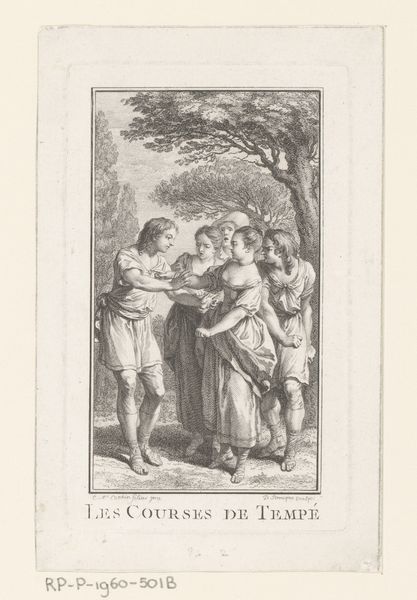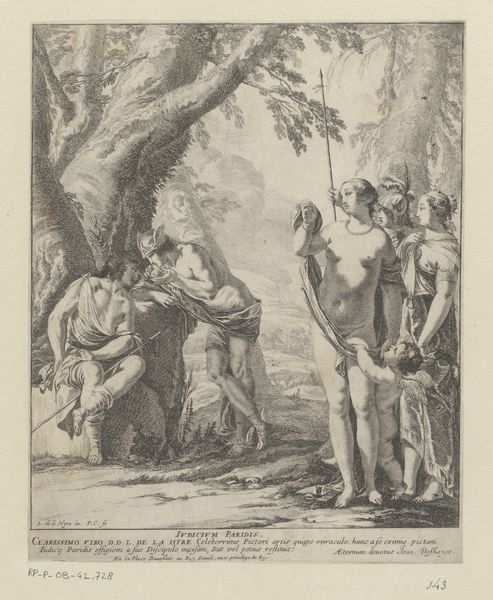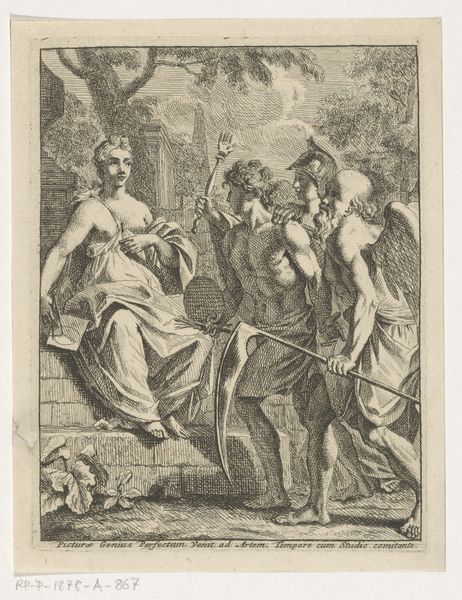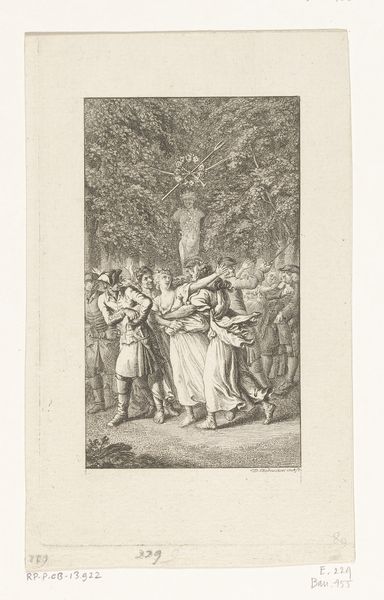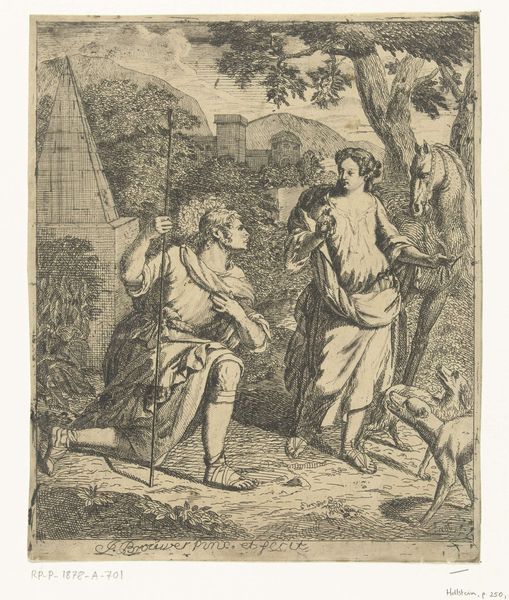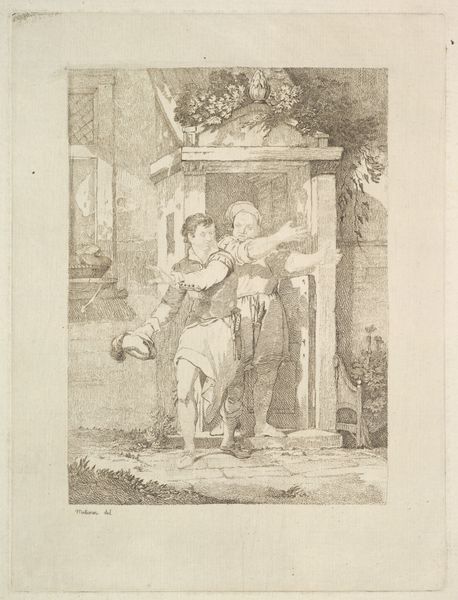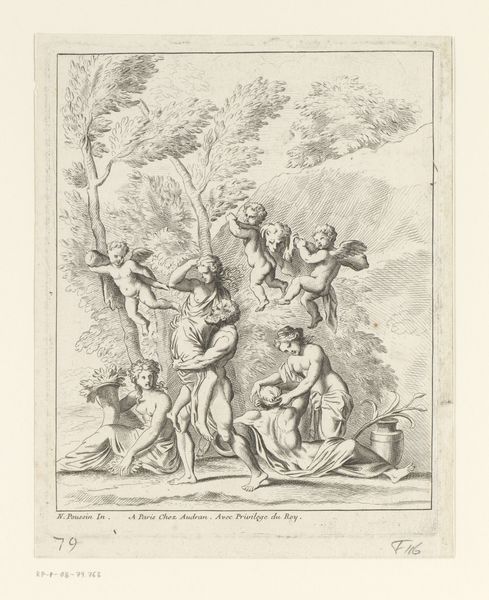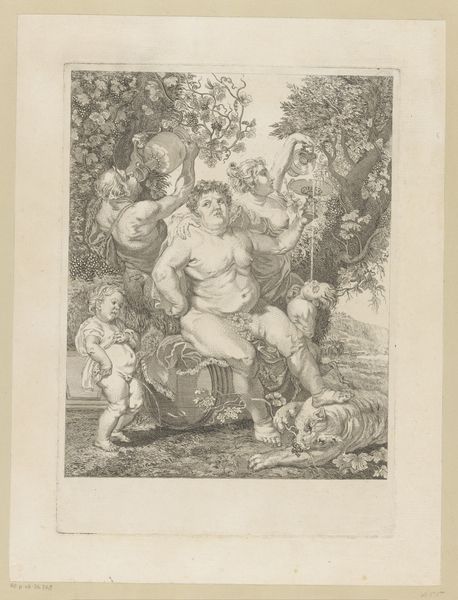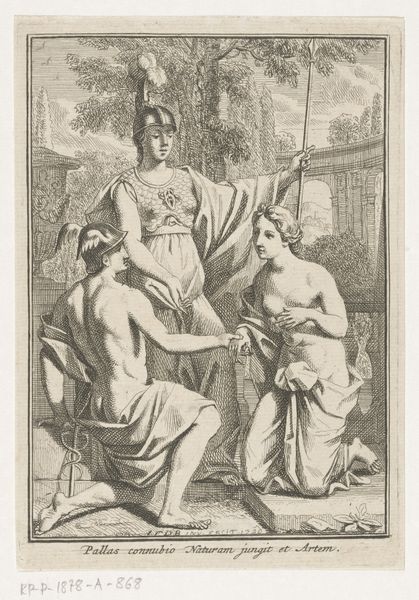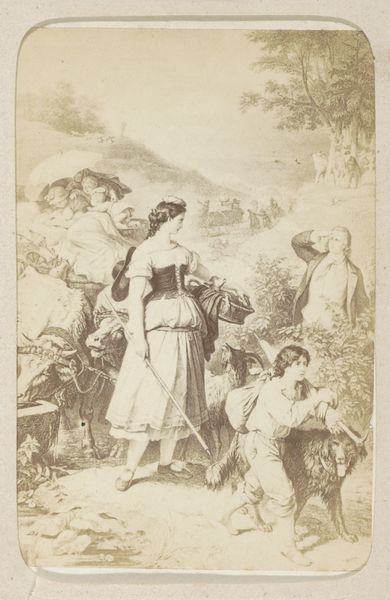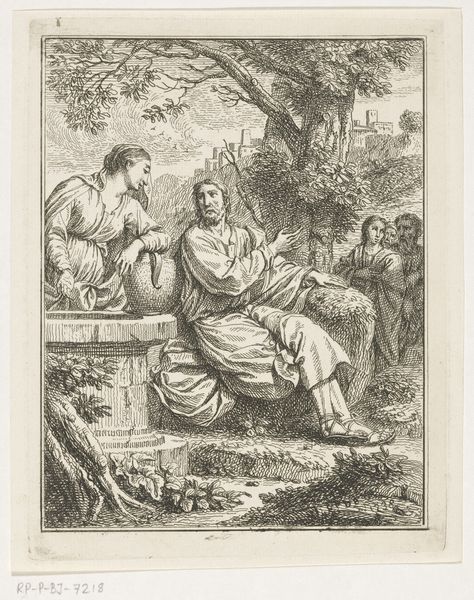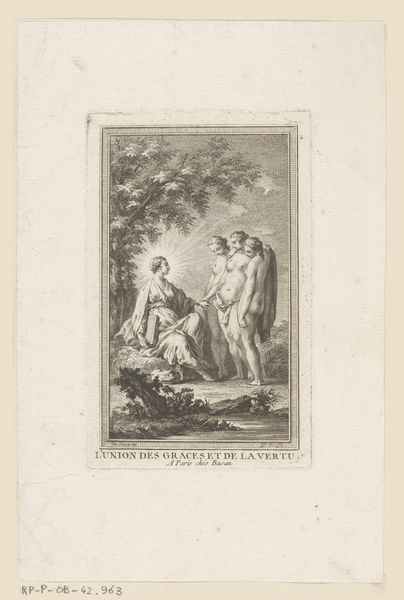
print, engraving
#
narrative-art
#
baroque
# print
#
old engraving style
#
figuration
#
line
#
history-painting
#
engraving
Dimensions: height 136 mm, width 80 mm
Copyright: Rijks Museum: Open Domain
Curator: This engraving, titled "Wedstrijd van Tempé," or "Contest of Tempe," was created by Dominique Sornique in 1734. What are your initial impressions? Editor: Well, I'm struck by the theatrical quality—the way the figures are arranged feels staged, almost like a tableau vivant, highlighting the patriarchal gaze upon female bodies. There’s also an overt classical reference...is it meant to reinforce an idealized standard of feminine beauty and societal harmony? Curator: Intriguing perspective. From a formal standpoint, Sornique's precise linework is remarkable. The cross-hatching creates subtle gradations of light and shadow, particularly noticeable in the drapery, giving depth and volume to the figures. The composition’s formal qualities give structure to what may be viewed as social relationships depicted. Editor: But that precise linework also reinforces hierarchical social norms of that era. Notice how the male figure commands the central space, while the women are clustered around him, their bodies positioned for observation. It implicitly upholds prevailing gender roles and societal expectations. Curator: Perhaps, but look at the dynamics of line and space – Sornique creates tension by using a linear design which draws the eye across the full composition. He has used line to suggest spatial depth on what is essentially a flat picture surface. Editor: I see it more as the viewer being placed as voyeur to a male fantasy. The spatial construction puts these figures on display in a narrative of idealized male leadership, so a celebration of that patriarchal structure is key, here. Curator: An incisive reading, yet focusing solely on that aspect risks overlooking the meticulous artistic execution. The texture, depth created by the engraving—the details. The skill in printmaking is important. Editor: Absolutely, but we cannot detach that artistic prowess from the socio-political context. Recognizing how Sornique's work can endorse a very particular perspective, how it upholds a gendered dynamic in European societies and historical artistic narratives should give any sensitive contemporary observer reason to pause, and perhaps critique. Curator: Very valid. Ultimately, it is a valuable point in art's ever continuing relevance—offering diverse ways of seeing history, society, art, and of course, ourselves. Editor: Precisely. May it be a call to re-evaluate existing societal narratives through a feminist lens and initiate change through artistic understanding.
Comments
No comments
Be the first to comment and join the conversation on the ultimate creative platform.
